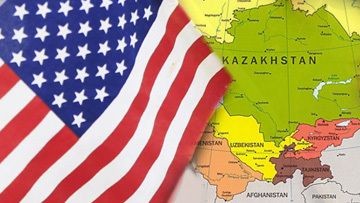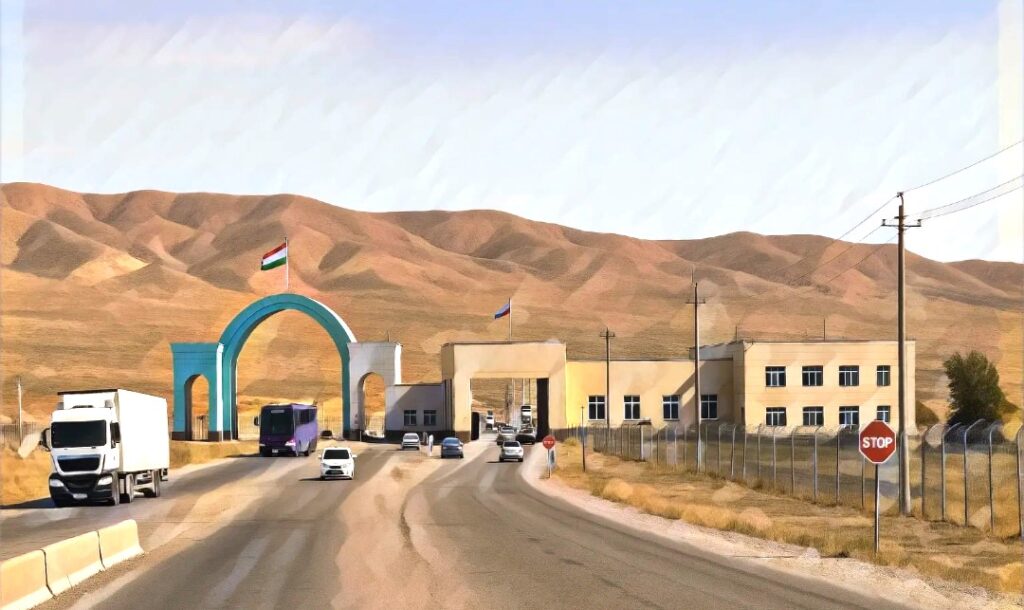BISHKEK (TCA) — As the new US administration is yet to determine its strategy in Central Asia and Afghanistan, we are republishing this article by S. Frederick Starr, the chairman of the Central Asia Caucasus Institute at the American Foreign Policy Council in Washington, originally published by The American Interest:
Whipsawed by years of foreign policy activism and then by general retreat, the United States is at risk of losing an opportunity to cement hard-won gains in Central Asia/Afghanistan.
For some time now many in official Washington have viewed Central Asia and Afghanistan as Eurasia’s flyover zone, to be quickly traversed as they “pivot” to East Asia, Russia, or back to the Middle East. Only in its final year did the Obama Administration pay the region much attention, by accepting Kazakhstan’s proposal to set up an annual group consultation with Washington. Even then, the State Department, in a move directly at odds with U.S. interests and the Central Asians’ own wishes, left Afghanistan out of the new grouping. As Talleyrand allegedly said of Louis XVIII, we seem to have learned nothing and forgotten nothing.
A host of clichés and semi-truths have fed the dismissive attitude harbored by many Americans toward the region. Many see “the Stans” as a group of former Soviet countries in Russia’s “backyard” that failed to adopt the Washington Consensus on privatization through shock therapy, and now plod along with dysfunctional economies and authoritarian governments. Civil society languishes, beckoning the State Department to wag its finger at what it brands religious repression. True, Chevron and other American firms are making money pumping oil there, but who needs that oil, with all the shale oil and gas in the United States? As to Afghanistan, is it not a quagmire that sucks in and destroys all who enter? These and similar notions are advanced by those calling for further disengagement.
Those favoring reengagement cite a completely different body of evidence. They note that most of the regional economies are making steady progress, and so may offer economic opportunities for U.S. business. GDP growth there last year ranged from 1.2 percent (Kazakhstan), 2.2 percent (Afghanistan), 3.47 (Kyrgyzstan), 4.2 percent (Tajikistan), 6.5 percent (Turkmenistan), and 7.1 percent (Uzbekistan). This may lag behind China’s 6.9 percent or India’s 7.6 percent—assuming for a moment that any of these numbers are accurate—but it soundly beats Russia’s -3.73 percent and compares favorably with Pakistan and Iran. A group of former World Bank economists predicts that all Central Asian economies have a realistic chance of reaching middle-class status by 2050, with Kazakhstan already there.1 Boosting their chances is the fact that all of them, including Afghanistan, boast rising generations of talented and well-educated young men and women whose values place them squarely in what the French sociologist Claude Levi-Straus once called the “global monoculture.”
On the geopolitical level, champions of reengagement note that the region as the only one on earth surrounded by nuclear powers and vulnerable to destabilizing competition or, worse, external control, which is Putin’s clear intent. But for thousands of years domination by an external power has been a formula for instability there and remains so today. The U.S. government, with aid from allies, should back Central Asian sovereignties and help them build security “from within.” The engagers also stress that Central Asia is one of the historic seats of Islam, yet its governments are secular, with secular laws and courts. Their systems still suffer the effects of Soviet statism and repression. But for all their flaws, they offer a better model for Muslim societies than most countries in the Middle East and are far more open to modern learning.
As the debate between disengagers and re-engagers rages on, dramatic but little-noticed changes are occurring within Central Asia itself. First, the transition in Uzbekistan following the death of Islam Karimov this past September went smoothly, with even the OSCE acknowledging that the election, while imperfect, marked a step forward. This effectively killed prospects for a dynastic succession in Kazakhstan, which President Nursultan Nazarbayev had ruled out anyway. During the election campaign in Uzbekistan, the acting President, Shavkat Mirziyoyev, launched a movement to resolve outstanding problems with all neighbors, reopened air flights to neighboring Tajikistan, which had been grounded for more than two decades, called for visa-free access from 15 countries, including the United States, sent his Foreign Minister to Kabul to open negotiations on expanding transport and trade, and promised for the first time to make the Uzbek currency convertible. In his inaugural speech he spoke boldly of making the offices of Governors and Mayors elective, and of setting up electronic complaint bureaus in every government office.
If President Mirziyoyev follows through on even half of these proposals, Central Asia and Afghanistan will be set on a new and more promising course. Meanwhile, Kazakhstan, in sharp contrast to Russia, is using the oil crisis to diversify its economy, mount a world exposition on renewable energy, and set up a regional financial center in Astana where disputes can be resolved through British law. Over the next two years Kazakhstan will also sit on the UN Security Council.
Meanwhile, gas-rich Turkmenistan has also felt the pinch of lower energy prices but is nonetheless forging ahead with construction of the TAPI gas pipeline across Afghanistan to Pakistan and India. America tried to develop this mega-project but failed, yet TAPI directly serves U.S. interests. TAPI will produce large royalties for Afghanistan and will provide thousands of jobs for a country in which the U.S. government has invested so much in lives and treasure. Finally, the two poorest countries of the region, Kyrgyzstan and Tajikistan, will soon benefit from the new CASA 1000 electric transmission grid, which will enable them to reap much-needed income from sending some of their huge potential supply of hydroelectric energy to Afghanistan and Pakistan.
In short, there are powerful currents of change and development afoot in Central Asia today. These present the U.S. government with a choice: It can either remain disengaged and continue to try to leave Afghanistan, or it can commit to finishing the job in Afghanistan and facilitating the security and revival of Central Asia as a whole, on the grounds that an insecure Afghanistan and Central Asia will continue to impinge on U.S. security concerns, as it did so tragically on 9/11. Exhausted from years of unrequited activism in the Middle East, Americans have difficulty even framing this choice. Instead, they debate the past. Those who would minimize America’s future engagement with Greater Central Asia view American actions to date as largely fruitless and, in Afghanistan, tied to expenditures so vast and ill-advised that no possible gains can offset them.
Both judgments are wrong. This gloomy view misses more than half of the story. The legacy of U.S. policy towards the post-Soviet states of Central Asia since 1992 may be mixed, but it is largely positive. U.S. policy helped solidify the sovereignty of these states, helped them develop sound institutions to a reasonable extent, and helped them grow economically. It didn’t turn them into liberal democracies, nor did it instill human rights as Eleanor Roosevelt would have understood them, although undeniable progress has been achieved in both areas.
However, Hillary Clinton tried but failed to help turn the region into a transportation hub, ultimately ceding the initiative to China. Nor was there any real coherence, let alone mutual reinforcement, among U.S. strategies in the areas of economics, security, and governance. A prime reason for this is that little or no coordination exists among the main executive agencies responsible for Afghanistan and Central Asia—namely, the State Department, the Pentagon, and the Department of Commerce—and within particular agencies. Security, trade, reform, and rights are pursued as separate goals, with USAID and the Pentagon each optimizing the efforts of its particular “stovepipe” with little concern for the single overarching strategy that both claim to be advancing. Obviously, such an approach precludes achieving synergies among them, let alone the trade-offs and, yes, deals that would make such synergies possible.
This problem begins at the top, and can only be solved at the top: Until the Secretary of State engages more actively with his counterparts in the Pentagon, Treasury, and Commerce, no progress will be possible and the total value of U.S. programs in Central Asia will continue to be less than the sum of their parts.
But what about Afghanistan? All five of the former Soviet states of Central Asia view Afghanistan as their greatest immediate source of danger and, if it is stabilized, as one of their major future partners. Skeptics in the U.S. are right to note the dangers that have increased steadily over the past two years. How could it have been otherwise, since in the same announcement that President Obama announced his “surge” he declared that he would shortly begin withdrawing U.S. forces? The Taliban and dozens of other extremist groups that had filtered into the country from the Middle East and Pakistan simply set their watches. But some of the best minds in the U.S. military believe stability and development are still attainable if Washington would somewhat increase its force level, declare its intentions for the longer term, and, equally important, remove some of the constraints imposed by Obama’s self-defeating rules of engagement.
Meanwhile, in several regions of Afghanistan new power plants are opening and legal businesses are expanding. In spite of everything, Afghanistan today has far more human and natural resources than South Korea at end of the Korean War. The most urgent step toward winding down the conflict and reaping this potential is for the U.S. to regularize its support for Afghan security and the Afghan economy and to pursue the two in an integrated fashion, rather than separately, as has been the case up to now. Instead of focusing on what the U.S. government will not do, as was the unmistakable message sent during the Obama Administration, it is time to define what it will do.
This is essential both for Afghanistan and the wider region. The alternative would be to create a power vacuum in a region where some of the world’s largest geopolitical tectonic plates crunch against each other. Other powers are watching for a signal from Washington and will adjust their actions depending on what we do. If the Trump Administration continues Obama’s plan to walk away from America’s trillion dollar investment in Afghanistan, others will fill the vacuum thus created. Worse, America’s friends and foes alike will question the seriousness of America’s commitments everywhere, and its tenacity in advancing them.
What, then, should be the pillars of a strategy of dynamic, sustained, but limited engagement with Central Asia and Afghanistan? The key elements of such a strategy can be stated in ten simple propositions.
First, the U.S. government should support the sovereignty of all the countries of the region and self-determination for the region as a whole. Central Asia must not become a zone of conflict among its big neighbors. Its security will arise either from its internal strengths or from an order imposed from without. History suggests that external control by anyone, whether China, Russia, or another power, generates instability. U.S. policy should therefore work to enhance security from within, by strengthening economies and self-defense forces and by fostering open and effective government.
Second, as part of the proposed “security from within rather than from without” strategy, the U.S. government must declare its support for the “balanced” approach to relations with major powers that all regional governments have adopted. On this point the interests of the United States and Central Asian countries and Afghanistan are identical.
Third, the U.S. government should preserve and significantly deepen its new annual consultative mechanism with the combined countries of the region (“C5 Plus 1”) and add Afghanistan to this regional entity. It should accord it much greater importance, welcoming inputs from regional partners and bringing to it proposals that flow from America’s strategic goals.
Fourth, the U.S. government should welcome any effort by regional governments to form a consultative and cooperative organization for themselves only, without the involvement of any outside powers. Such an initiative would be for Central Asia as a region, and should not be seen as being directed against anyone. In light of the fact that it was Putin who closed down an earlier regional body along these lines, the Central Asia Economic Union, the U.S. government should be prepared to indicate early its support of any new entity the regional countries might choose to create.
Fifth, the U.S. government should not welcome further expansion of the Eurasian Economic Union because it limits sovereignty without bringing commensurate benefits. In spite of its claims to the contrary, it promotes political integration, Russia-based security, economic control from the north, Russian legal and economic practices, Russian sources of information, and Russian foreign policy objectives. Further, it constrains relations between its members and their other powerful neighbors, including China, India, Pakistan, and Iran, as well as with the United States and Europe. Moreover, such an expansion of the EEU promises eventually to curtail Russia’s own evolution as an open society, which will directly and negatively affect American and Western interests elsewhere.
Sixth, working mainly through government-to-government contacts but also through NGOs that are open to working with official bodies, the U.S. government should promote the development of responsive and effective governments that over time can evolve toward more open and democratic practices. In doing so, it must work with all countries of the region and avoid picking favorites. In advancing this program the U.S. government must work with regional governments, not on them.
Seventh, U.S. policy should once again embrace the plan to promote the entire region as an open road, railroad, and energy transit zone. The goal is to shape existing transport plans so as to bring maximum benefits to the region itself. An important first step would be to open direct and frequent flights between all six capitals. A second step would require direct access by road and railroad to the southern ports of Gwadar in Pakistan (via Kandahar in Afghanistan) and Chabahar in Iran. Both ports are needed in order to foster competition and drive down transport costs for Central Asians. It also means opening the route from Pakistan via Afghanistan to the new Caspian port of Turkmenbashi and keeping the Caspian Sea open to unimpeded transit between Aktau, Turkmenbashi, and Alat. In embracing regional transport and trade as a goal, the U.S. government should not and cannot become a major funder of infrastructure. Instead, it should help regional states develop their own priorities rather than respond passively to plans devised by major powers or international financial institutions. U.S. policy can advance this role by supporting country-based and region-wide planning efforts and by using its convening power to promote the priorities thus identified.
Eighth, the U.S. government should declare as a strategic interest the establishment and improvement of secular governments, legal systems, courts, and public education, while protecting the rights of both believers and non-believers. The defense of secular institutions in Muslim societies will call for diverse initiatives to roll back the worst practices of the Soviet era and to replace them with “best practices” gleaned from other countries. U.S. officials should present the American government as a partner rather than a teacher. By advancing this goal in and with Muslim majority countries with historic claims to being a heartland of the faith, the U.S. government will promote a model that can be applied elsewhere. Through C 5 Plus 1 and other channels, the U.S. government should participate as an equal in discussions of this issue, which happens also to be a challenge to the West itself.
Ninth, the U.S. government, working with regional governments, European partners, and the private sector, should ensure that all people in the region gain direct access to Western news media and information. This “information agenda” is significantly an American issue. The closing of USIA and the erosion of the U.S.-sponsored radio stations are only the most visible part of the problem. More serious is the failure to reframe the issue in terms of all the new media and technologies that have mushroomed onto the scene in the past few years. Progress in this area will require the State Department, as a first step, to convene qualified experts from both the private and public sectors to review the entire situation and make economically feasible proposals.
Tenth, in all of the above, U.S. policy should facilitate the involvement of U.S.-based firms by working to remove impediments to investments there and improving business contacts and two-way trade.
It is one thing to announce strategic objectives and another to achieve them. Effective implementation will require that U.S. policy consistently treat Greater Central Asia as a region as well as an agglomeration of six sovereign states. It will also require that Washington bring together its security, political, and economic concerns into a single negotiation with each country. This task falls under the purview of the Assistant Secretary of State for Central and South Asia, with support on important relationships from the Secretary of State. This must result in agreements that embody trade-offs and synergies between U.S. interests and those of its partners, and must be made in the context of advancing clearly stated U.S. goals in Central Asia as a whole. The absence of such deal-making is one of the principal failures of current U.S. strategy. The achievement of agreements such as those called for here, as well as their implementation, will require a much more effective interagency process at all levels than exists at present.
In developing and implementing a strategy based on the region as a whole, the U.S. government must recognize the leadership role of Kazakhstan and Uzbekistan and do everything possible to facilitate cordial and equitable relations between the two largest economies of the region, and their collaboration in areas of common interest. Far from diminishing the standing of the other states in U.S. policy, such an approach recognizes that positive and productive relations between these regional drivers, and between them and Washington, will facilitate the development of strong and beneficial links among all the other countries in the region and between them and the United States.
This strategy must be explained to Russia, China, India, Pakistan, Turkey, and other regional powers as an approach based on self-restraint, and that it is not aimed against the legitimate interests of anyone. U.S. officials can explain this in bilateral meetings, but in general they must avoid negotiating with Russia or China over the heads of the Central Asian governments.
Finally, effective implementation of the regional strategy proposed here will require high-level leadership. For example, when it comes to connecting the capitals of all six countries with regularly scheduled and frequent airline flights, leadership from the Secretary of State and Secretary of Commerce will likely be required. Thanks to the consultative formats they maintain with Russia, China, Japan, and the European Union, governments of the region have come to expect such high-level involvement, and will judge a hands-off approach from top American officials as a sign of disinterest. A sure way to counter this perception would be for the U.S. President to make a whirlwind tour of all the capitals of the region. This is the more important since the U.S. President is the only head of state of a major power never to have visited any of the five former Soviet republics.
It would be a grave mistake for the United States to disengage from Central Asia and Afghanistan. Discussion of this issue, whether with respect to Afghanistan or its five northern neighbors, is often couched in terms of dollars and cents. But rarely do such arguments address the cost of disengagement. The present “exit strategy” in Afghanistan, which one pundit called “all exit and no strategy,” will negatively and dramatically affect all Central Asia. It will invite Russia’s destabilizing meddling in the five former Soviet republics and leave the way open for Putin to launch further efforts to establish himself as an arbiter of Afghan affairs. By undercutting the “balanced” strategies of all these states and of Afghanistan itself, America’s disengagement will sharply reduce the extent and depth of their interactions with the West and drastically diminish the likelihood of their becoming more open and democratic societies. As this happens, the entire region, which holds such promise as a model of Muslim societies with secular governments and laws, will feel the increased impact of radical Muslim extremism and terrorism. This in turn will cause China to deepen its security reach into the region, which will inevitably trigger yet another round of instability and conflict.
During the 1990s, under both Democrats and Republicans, the U.S. government took a proactive approach to the new states of Central Asia, even as it ignored growing problems in Afghanistan. After 9/11 America sacrificed thousands of lives and untold treasure in Afghanistan while demoting its northern neighbors to minor roles. This leaves America today with a stark choice: On the one hand it can abandon Afghanistan to Pakistan and Iran, with supporting roles for Russia and China, leaving the rest of Central Asia to Russia and China, with supporting roles for growing number of extremists from a decaying Afghanistan. Or, on the other hand, it can embrace a limited but proactive and integrated policy toward the region as a whole in the realistic expectation that the U.S. government can help it emerge from a difficult and painful period intact and with viable economies and institutions.
Yes, there are costs of a re-engagement with Afghanistan and Central Asia, but they are bound to be not only far less than the cost of disengagement and inaction but also more enduring. In the decades since the Korean War the United States made this calculation in South Korea and resolved to persist, with impressive results. We should follow a similarly strategic course today with respect to Afghanistan and Central Asia.
The problem is that as of this writing the U.S. government has neither an integrated strategy towards the region as a whole nor effective coordination between the various agencies that carry out what passes for American policy there. Glaring flaws in the conception, negotiating practices, and implementation of American strategy must be fixed if any enduring progress is to be achieved.
But simply by acknowledging them, and accepting that they are fully under our own control, we will set ourselves on a more positive course. The derangements in U.S. strategy and its execution can be fixed. If we choose to do so, we might surprise ourselves at how relatively inexpensive success can be.
1 Harinder Kohli, Johannes Linn, eds., Central Asia 2050 (Center on Global Interests, 2016).









